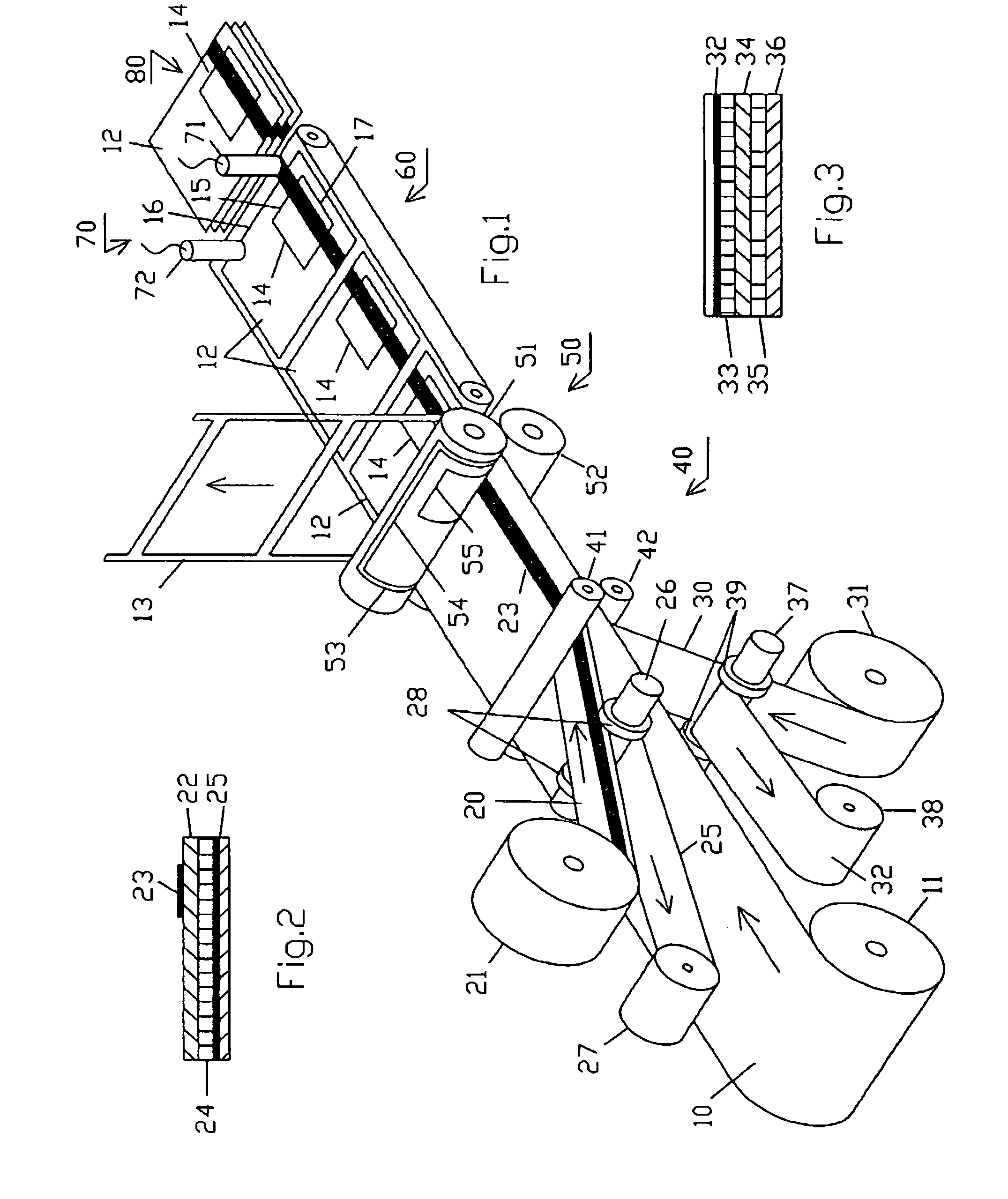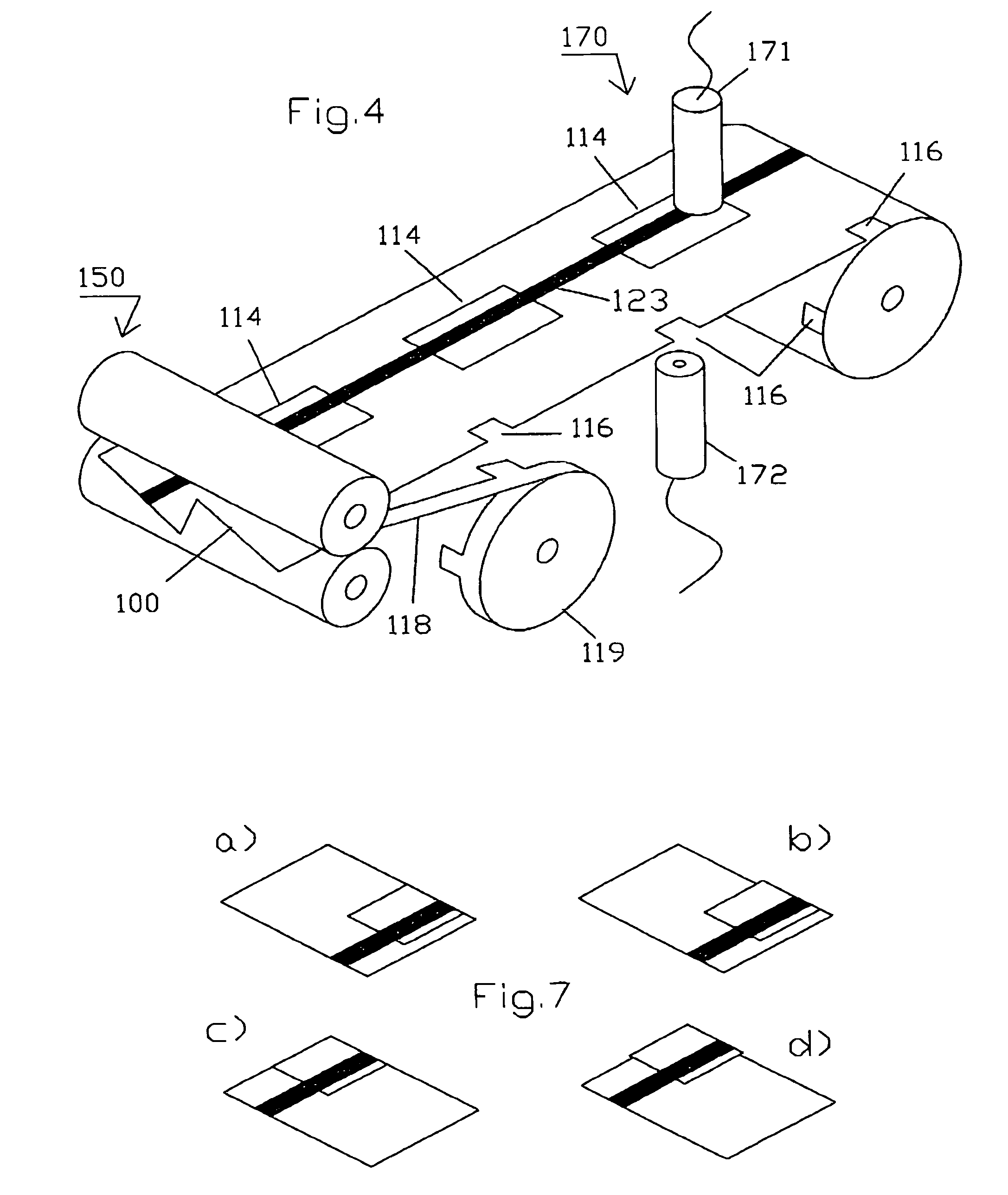Method for the production of punched parts in web- or sheet-like print substrates and their further processing
a technology of print substrates and parts, applied in the direction of paper/cardboard containers, instruments, paper/cardboard articles, etc., can solve the problems of unattractive punching rings and the possibility of writing
- Summary
- Abstract
- Description
- Claims
- Application Information
AI Technical Summary
Benefits of technology
Problems solved by technology
Method used
Image
Examples
Embodiment Construction
[0032]In the case of the device of FIG. 1, in a laminating station 40, a magnetic strip web 20 is laminated onto the front side and, overlapped with that, a carrier material web 30 is laminated onto the rear side of a printed substrate web 10. The three webs are in each case unwound from rolls 11, 21 and 31 and run through the laminating station 40 between two pressure rolls 41 and 42.
[0033]The magnetic strip web 20 is a multi-layer laminate with a film layer 22 on which a magnetic strip 23 is continuously applied on the front side. On the rear side, the film layer is provided with an adhesive layer 24, by means of which it is adhesively bonded to the print substrate web 10. In order that it can be wound up onto itself, the magnetic strip web 20 on the roll 21 is still covered with a separating paper layer 25, which is pulled off from the adhesive layer 24 upstream of the laminating station 40 by means of a roll 26 and is thereafter wound onto a roll 27. The roll 26 is provided with...
PUM
 Login to View More
Login to View More Abstract
Description
Claims
Application Information
 Login to View More
Login to View More - R&D
- Intellectual Property
- Life Sciences
- Materials
- Tech Scout
- Unparalleled Data Quality
- Higher Quality Content
- 60% Fewer Hallucinations
Browse by: Latest US Patents, China's latest patents, Technical Efficacy Thesaurus, Application Domain, Technology Topic, Popular Technical Reports.
© 2025 PatSnap. All rights reserved.Legal|Privacy policy|Modern Slavery Act Transparency Statement|Sitemap|About US| Contact US: help@patsnap.com



